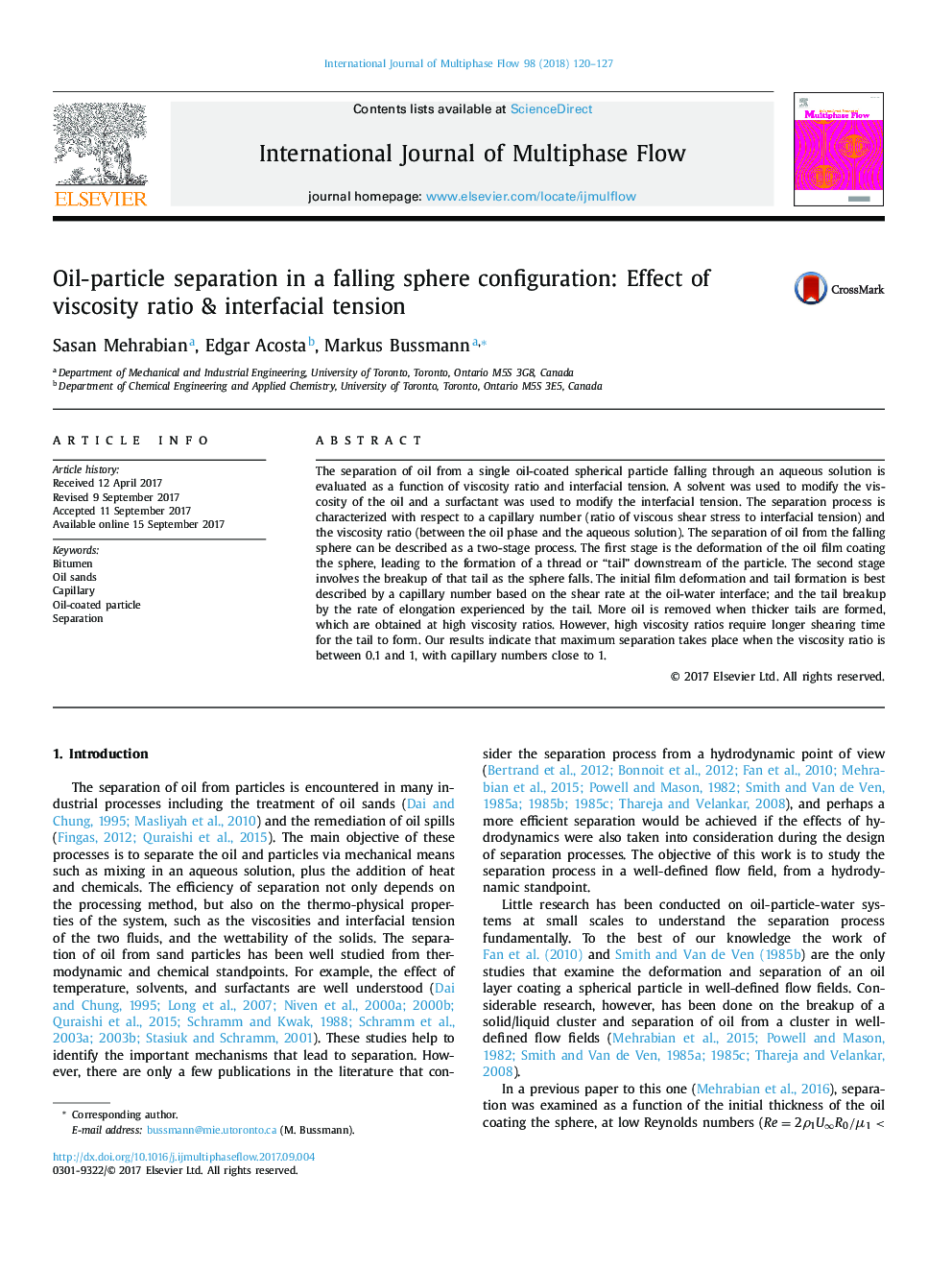| کد مقاله | کد نشریه | سال انتشار | مقاله انگلیسی | نسخه تمام متن |
|---|---|---|---|---|
| 4994854 | 1458480 | 2018 | 8 صفحه PDF | دانلود رایگان |
- Maximum separation occurs when the oil-to water viscosity ratio is between 0.1 and 1.
- Adding surfactants to lower the oil-water interfacial tension is only beneficial to reach capillary numbers close to unity.
- The separation process takes place in two steps: the deformation of oil film coating the sphere that leads to the formation of a tail, and the elongation and breakup of the tail downstream from the sphere.
The separation of oil from a single oil-coated spherical particle falling through an aqueous solution is evaluated as a function of viscosity ratio and interfacial tension. A solvent was used to modify the viscosity of the oil and a surfactant was used to modify the interfacial tension. The separation process is characterized with respect to a capillary number (ratio of viscous shear stress to interfacial tension) and the viscosity ratio (between the oil phase and the aqueous solution). The separation of oil from the falling sphere can be described as a two-stage process. The first stage is the deformation of the oil film coating the sphere, leading to the formation of a thread or “tail” downstream of the particle. The second stage involves the breakup of that tail as the sphere falls. The initial film deformation and tail formation is best described by a capillary number based on the shear rate at the oil-water interface; and the tail breakup by the rate of elongation experienced by the tail. More oil is removed when thicker tails are formed, which are obtained at high viscosity ratios. However, high viscosity ratios require longer shearing time for the tail to form. Our results indicate that maximum separation takes place when the viscosity ratio is between 0.1 and 1, with capillary numbers close to 1.
Journal: International Journal of Multiphase Flow - Volume 98, January 2018, Pages 120-127
